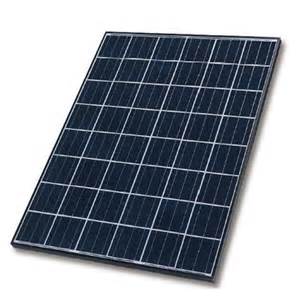"Renewable energy: Any energy resource that is naturally regenerated over a short time scale and derived directly from the sun (such as thermal, photochemical, and photoelectric), indirectly from the sun (such as wind, hydropower, and photosynthetic energy stored in biomass), or from other natural movements and mechanisms of the environment (such as geothermal and tidal energy). Renewable energy does not include energy resources derived from fossil fuels, waste products from fossil sources, or waste products from inorganic sources." - Texas Renewable Energy Industries Alliance
Solar is the Latin word for sun. This word is commonly used when referring to energy derived from the sun - solar energy.
There is a variety of technologies that convert light from the sun to usable energy. One of the most common of these technologies is the photovoltaic (PV) technology that converts sunlight to electricity. In this case, photovoltaic (PV) cells or, simply, solar cells are used to convert sunlight directly into electricity. The word photovoltaic was derived from the Greek word photo, meaning light, and volt, a unit used in the measurement of the electromotive force (emf) in electricity.
Photovoltaic cells are made of special materials, such as silicon, called semiconductors. Basically, when light strikes the cell, some of it is absorbed within the semiconductor material. The energy of the absorbed light is transferred to the semiconductor and knocks electrons loose, allowing them to flow freely. The PV cell acts to force the freed-electrons to flow in a certain direction, constituting a flow of electricity. To draw the electricity from the cell for external use, conductors are connected to the cell.
 Photovoltaic (PV) ModuleMost PV cells fall into one of two basic categories: crystalline silicon or thin-film. Crystalline silicon cells are usually made from either monocrystalline, multicrystalline, or ribbon silicon materials. A number of of such cells are combined to form a PV module which usually comes in the form of a flat-plate (see picture right).
Photovoltaic (PV) ModuleMost PV cells fall into one of two basic categories: crystalline silicon or thin-film. Crystalline silicon cells are usually made from either monocrystalline, multicrystalline, or ribbon silicon materials. A number of of such cells are combined to form a PV module which usually comes in the form of a flat-plate (see picture right).
Thin-film is a term encompassing a range of different technologies, including amorphous silicon and other semiconductors like cadmium telluride or CIGS (copper indium gallium diselenide). Thin film solar cells use layers of semiconductor materials only a few micrometers thick. Their flexibility make them suitable for use as rooftop shingles and tiles, building facades, or the glazing for skylights while producing electricity.The crystalline modules, however, are more popular on the marketplace and are generally more efficient.
PV systems are already an important part of our daily lives. They are being used to provide power for street lamps, traffic signals, water pumps, lighting, appliances, and machines in homes and workplaces. To utilise the electricity from PV modules, other components such as inverters, charge-controllers and batteries may be needed to make-up the PV system . The components required depend on the type of system.
PV System Types
OFF-GRID SYSTEMS
The PV modules depend on sunlight to produce electricity; at nights, or during periods of low sunlight, modules produce little or no electricity. In such cases, a PV system relies on other auxilliary sources to provide electricity.
In an off-grid system, batteries provide the electricity during nights or periods of low sunlight. In periods of bright sunlight, the PV modules provide electricity to charge the batteries apart from supplying energy to connected equipment and appliances (the load). The batteries store the electrical energy from the PV modules and deliver that energy to the load when there is low or no sunlight.
The off-grid system, therefore, usually carries a charge-controller that controls the charging of the batteries. It may also carry an inverter to provide alternative current (AC) similar to what the electric utilities supply. The AC is required by most appliances and equipment in homes and workplaces, but PV modules produces direct current (DC), similar to batteries.
GRID-TIED SYSTEMS
Grid-tie (or on-grid) PV systems are those that interact with an electricity distribution grid. These PV systems are connected to the grid by way of a special inverter called grid-tie inverter or, sometimes, synchronous inverter. With the grid-tie systems, the grid provides the electricity to meet the demand that cannot be met directly by the PV modules, like in the case when there is little or no sunlight. In cases when the PV modules are producing more electricity than is being utilised by its load, the excess electricity is fed to the grid and is utilised by other consumers connected to the grid. Homes and businesses with grid-tie systems would get their electricity usage from the utility grid offset by what their PV systems delivered to the grid.
The disadvantage of the grid-tie system is that if there is no supply from the grid, the PV system cannot operate, even when there is sunlight. To avoid this, grid-tie PV systems can be configured with battery back-up.
References:
- "Solar Electricity Basics," Home Power, accessed July 11, 2015, http://www.homepower.com/articles/solar-electricity/basics/what-solar-electricity.
- "Solar Photovoltaic Technology Basics," National Renewable Energy Laboratory, accessed July 11, 2015, http://www.nrel.gov/learning/re_photovoltaics.html.

